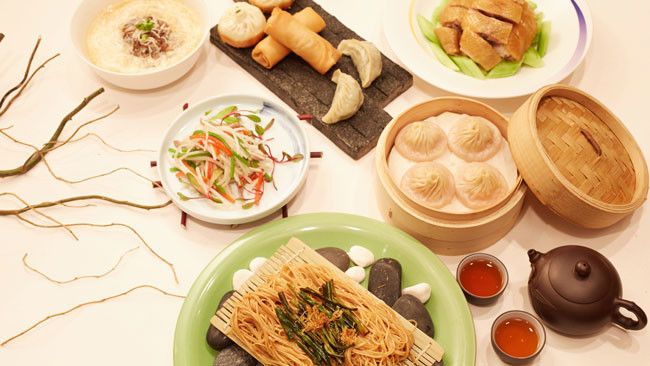Demei's View - Wine Communication from a Chinese Winemaker
What to eat and drink is of course an important aspect in life. However, until a while ago Chinese people still felt awkward talking about it in public. At that time, indulging in eating, drinking and pleasure-seeking were considered synonyms to ‘fooling around’ and ‘unwilling to make progress in life’.

Actually if we go further back in history, in traditional Chinese culture, people’s attitude towards food and drink was rather different: In the era of agrarian culture, people lived at the mercy of the elements and starved when there was nothing to eat. People respected food and celebrated festivals with big feasts — I don’t suppose you can name one Chinese traditional festival without a dining tradition attached.
Thanks to my diligent parents, there is no bitter memory of real hunger from my childhood. But I’ve been told stories over and over again by my grandmother and parents about how they craved food when they were young, and we were only allowed to appreciate the beauty of food and drink when learning ancient poetries.
Now grandma has passed away, and the stories about how my father’s generation starved when they were young are obviously not at all attractive to the younger generation nowadays. Most of them perhaps don’t even know what real hunger feels like. They are expressing their ‘likes’ and ‘dislikes’ of food at will and won’t easily yield to other people’s opinions.
My parents still proudly present an abundant dining table at family gatherings as proof of a much better life, although their nags no longer have loyal listeners. But for us — the ‘transitional’ generation — dining tables are just a bit difficult to cope with: when at last we don’t need to recall the misery of those bitter old days when enjoying today’s happiness, and are embracing the freedom to have a say about the food on our plates, we are met by the wine boom from the West. When various wine bottles start to appear on dinner tables, all of a sudden how to match food with wine becomes a more important topic.
The topic of how to apply Western food and wine traditions to the Chinese dinner table has only started to become more popular in the last few years, together with the rapid development of the Chinese wine market. However, although merchants are getting excited about the idea, consumers don’t seem to care as much, which is a rather disappointing reality for those keen promoters.
When given a Chinese dish or a type of Chinese food, wine experts can always find a wine or a type of wine that matches it perfectly; it works the other way around as well. However, consumers are also entitled to make the ‘match’ which they think is correct: for instance, someone is very proud about his home-brewed red wine (of course he is), and he likes the traditional Chinese dish ‘sweet-and-sour carp’ very much (or he only knows this one Chinese dish), so he just decided to pair the two. If you would agree that the combination of wine and food is like a ‘marriage’, then isn’t this an ‘arranged marriage’ of wine? And it should be our role to guide consumers to avoid these ‘forced combinations’.
When promoting paring Chinese food with wine perhaps we have overlooked an important factor: the way food is served in Chinese restaurants is different from that in Western restaurants.

It was at a dinner 11 years ago with my friend CH'NG Poh Tiong that I first paid attention to these differences. That day Poh Tiong invited a few Chinese students, who were then studying wine in Bordeaux to, of course, a Chinese restaurant. We brought our own wines and ordered some more at the restaurant. The dinner started with Champagne; Poh Tiong ordered four dishes before putting the menu down and asking the waiters to start serving the food (but he insisted on keeping the menu). I was surprised, as these four simple dishes were obviously not enough for five people to share.
Poh Tiong brought out a chilled Domaine de Chevalier Blanc, which the waiter poured for us, and dinner started in chats and laughs. When the white went down by half, Poh Tiong ordered another four hot dishes — which are the usual main dishes on Chinese dining tables — and red wine glasses started to be put on the table. I suddenly realised that Poh Tiong was coordinating the food and wine combinations by adjusting the pace in which the food was served! How to match Chinese food with wine became the main topic during the rest of the meal, from which I learned a great lesson.
Chinese food is known for its diversity of flavours: dishes that are cooked with various types of meat, fish and vegetable, and taste cold, hot, sour, sweet, bitter, spicy… can all be served simultaneously on the table. It’s worth noting that normally when orders are placed and passed to the kitchen, in what sequence the dishes are served is basically no longer the waiters’ business. You must have experienced this if you have ever been to a Chinese restaurant: after making the orders, while you are still chatting with each other, all of a sudden the table becomes stuffed with plates of food. Chinese hosts feel guilty if they don’t fill the table in front of their guests with food; however, with such diverse flavours presented all at the same time, how would you pair them with wine? The dinner 11 years ago with Poh Tiong was a wonderful hint.
If restaurant managers want to promote Chinese food and wine matching in their restaurants, why not adopt this method: group dishes with similar flavours and serve them to the customers in the sequence of light to heavy, simple to complicated. This way the warm, crowded atmosphere on a typical Chinese dining tables is well-reserved, while the basic principles of food and wine combinations are also kept, thus a good ‘marriage’ can be achieved.
Attempting to promote matching Chinese food with wine while overlooking how food is served in Chinese restaurants will not work. And I can assure you—there is no use trying to change Chinese people’s dining habits to suite the ideal form of food-and-wine combinations either. The habit to dine in a warm, lively atmosphere has not just formed in the last few years, but is deeply rooted in the Chinese culture. During the horrifying SARS period, hygienists indeed suggested that people start having separate portions of food individually. However, when the crises passed, people happily went back to the usual crowded, bustling Chinese dinner table. There is no ‘right’ or ‘wrong’ in it, though. If anyone dared suggest that the way food is served altogether in Chinese restaurants is ‘wrong’, the most likely reaction from consumers would be: let’s eat without wine then, that’s easier.

Columnist Introduction
LI Demei, associate professor of Wine Tasting and Enology in Beijing Agriculture College and invited teacher at ESA Angers, France. He obtained Master diploma for Fruit Tree Science, and Engineer for Viti-Oeno-Economie in ENITA de Bordeaux. Demei had his training in Chateaux Palmer, and visited almost all the wine regions in the world. He is aiming to create a dialogue with the consumer with wine.
Click here to read all articles by LI Demei>>
- Follow us on Weibo @Decanter醇鉴  and Facebook
and Facebook for most recent news and updates -
for most recent news and updates -
Translated by Sylvia Wu / 吴嘉溦
All rights reserved by Future plc. No part of this publication may be reproduced, distributed or transmitted in any form or by any means without the prior written permission of Decanter.
Only Official Media Partners (see About us) of DecanterChina.com may republish part of the content from the site without prior permission under strict Terms & Conditions. Contact china@decanter.com to learn about how to become an Official Media Partner of DecanterChina.com.














Comments
Submit